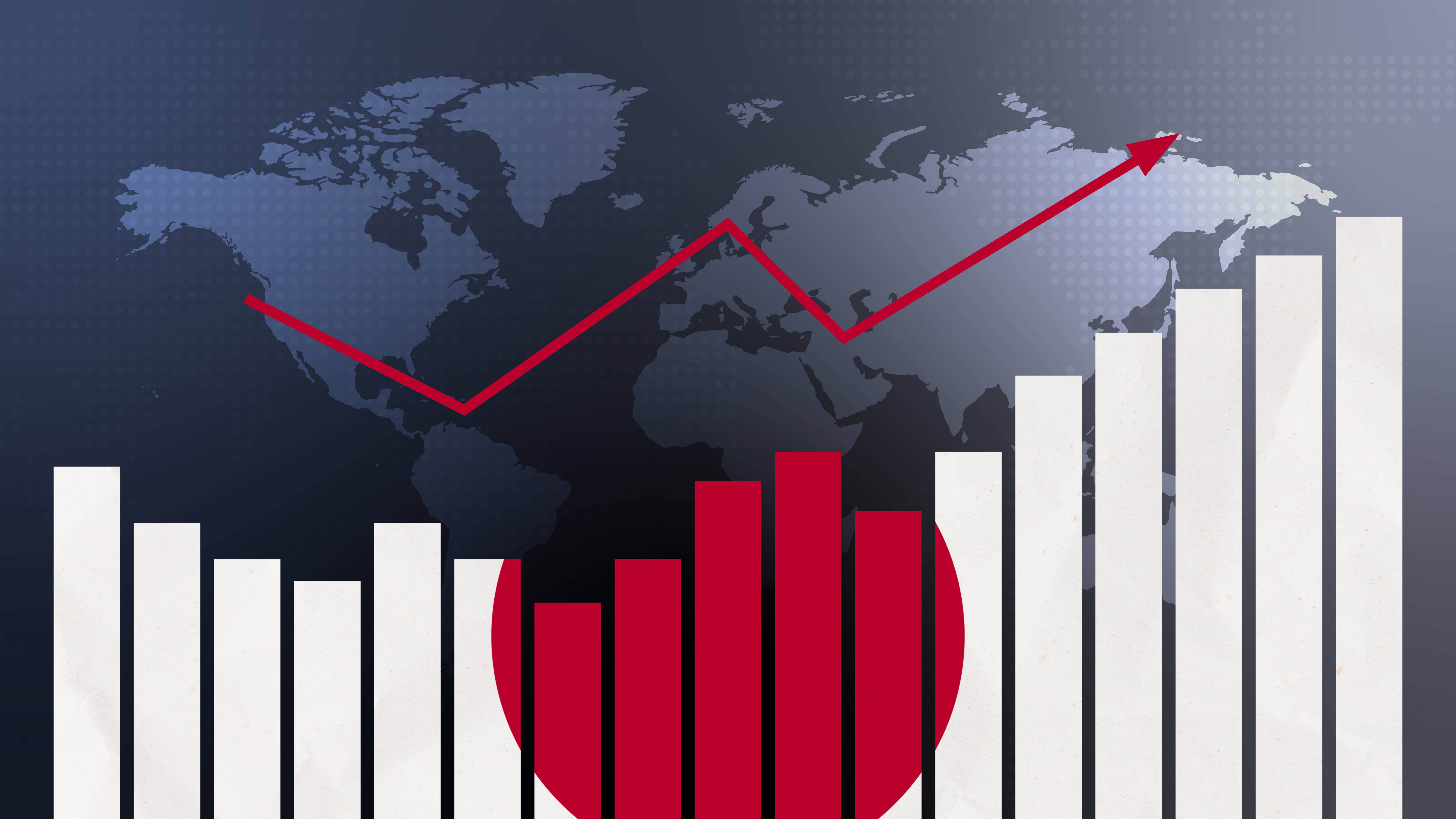
- Article
- Macroeconomics, Economic Policy
The Double Failure of Japan’s COVID Control Measures
September 14, 2021
Economist Hideo Hayakawa spotlights externalities as the conceptual missing link in Japan’s confused and failed effort to control the COVID-19 pandemic while limiting damage to the economy.
* * *
The concept of externalities is fundamental to economic theory and, more specifically, to a sound understanding of the economic policy issues posed by the COVID-19 pandemic. Yet there has been surprisingly little evidence of its influence on Japan’s efforts to control disease-spreading behaviors. In the following, I attempt to explain how externalities apply to pandemic policy, beginning with the basics.
Externalities and the Need for Intervention
Modern economics is predicated on the idea that, in a free-market economy, individuals act out of rational self-interest, and further that the sum of their economic decisions generally yields the optimum outcome for the economy as a whole. In reality, of course, this is not always the case. The problem is that, in some circumstances, what benefits an individual may have a negative impact on others and ultimately society as a whole; this is what is meant by “negative externalities” (also referred to as “external diseconomies”).
Epidemics like the current one vividly illustrate this problem. Individuals, weighing the risks of infection against the benefits of such economic behaviors as production and consumption, may well decide in favor of those behaviors. That may seem like a rational trade-off at the individual level. The problem lies in the negative externalities of the decision, namely, the increased risk of transmitting the virus to others. If everyone acts purely on the basis of rational self-interest during an epidemic, without considering the risk posed to others, the overall level of economic activity is bound to fuel rapid spread of the disease. In such a case, there is a powerful economic case to be made for government intervention, including full or partial lockdowns, to tamp down activity.
Behaviors that carry the highest risk of transmission should, as a rule, be subject to the most rigorous restrictions. Unfortunately, we are not always able to accurately gauge the risk of each behavior. In the spring of last year, when far less was understood about the mechanism of coronavirus transmission, many governments imposed draconian restrictions on almost every type of activity, precipitating a dramatic economic downturn worldwide. Today, it is widely felt that those measures went too far.[1]
On the other hand, the Japanese government’s “Go To Travel” campaign (implemented in the fall of 2020) clearly violated the aforementioned rule when it subsidized discounts on domestic travel and stays at registered lodgings, thus encouraging the very behaviors blamed for the spread of the virus. Nor was Japan the only country to adopt counterproductive policies to stimulate tourism and dining out. These measures can be construed from a political standpoint as efforts to help out those hit hardest by the pandemic. I am struck, however, by the number of Japanese economists who supported Go To Travel in its early stages. One can only suppose that they were unaware of the problem of negative externalities.
The lessons learned in the first year of the pandemic have molded the government’s response since then. We learned that COVID-19 was transmitted primarily through respiratory droplets and that transmission in commuter trains, for example, was quite low, provided everyone wore masks and kept conversation to a minimum. On the basis of this knowledge, the government narrowed the focus of its restrictions to indoor settings like dining and drinking establishments where people tend to interact closely without masks. (This, of course, is one reason such services have been left behind by the current economic recovery).
Unfortunately, the situation seems to have changed with the rapid proliferation of the highly infectious Delta variant. Lately, department stores, classrooms, and pachinko parlors have been identified as the source of a significant number of clusters. Under the circumstances, it might prove necessary to expand the scope of intervention, with renewed efforts to encourage telework so as to limit transmission on trains and in the workplace.[2]
Timing is Everything
To determine the appropriate level of economic activity in various settings, it is not enough to calculate the current risk of infection. We also need to get a handle on the dynamics of the epidemic in order to calculate the impact on the spread of disease going forward. One standard tool is the SIR (susceptible-infected-recovered) model, which mathematically describes and predicts the spread of infection on the basis of changes in three parameters: the number of susceptible, currently infected, and recovered (or otherwise immunized) individuals.[3] One key point that such models teach us is that, absent any intervention to curb transmission by limiting person-to-person contact, the initial stage of an epidemic is characterized by exponential growth in the numbers of infected persons (I), owing to the small number of previously exposed individuals (R) in the population. Japan is by definition at the initial stage, since only about 1% of the population is estimated to have been infected. With the I parameter rising exponentially, the risk of transmission soars as well. This means that the trade-off between economic and health outcomes worsens the longer economic activity continues unimpeded.[4] Consequently, the best way to limit the damage to the economy, as well as to public health, is to minimize the number of cases by imposing restrictions on activity earlier and lifting them later.
Taiwan, China, and South Korea all illustrate this principle. Taiwan succeeded by moving very quickly to prevent the influx of the coronavirus. China and South Korea both experienced major outbreaks early on but were nonetheless able to keep the number of cases very low by imposing rigorous restrictions. These countries also illustrate how limiting the infected population facilitates the effective use of testing, contact tracing, and quarantine measures.
Japan, by contrast, was slow to impose restrictions and all too quick to lift them. For example, Tokyo has been under a state of emergency on four different occasions since the start of the pandemic. In every case but the last—when the government moved proactively in consideration of the Olympic and Paralympic Games—the number of new cases peaked right around the time of the emergency declaration. Given the substantial time lag between exposure and the appearance of symptoms, one must assume that the people, alarmed by the surge, had begun limiting their own activity before the government intervened. The intervention came too late to do much good.[5]
In addition, restrictions were removed prematurely, particularly following the second and third declarations. Cases quickly spiked again, forcing the government to impose a new state of emergency shortly after lifting the previous one. This stop-and-go approach has proved counterproductive. With each new state of emergency, the impact of the government’s declaration has diminished, while the public’s frustration has risen. As a result, compliance with the emergency restrictions has fallen off (as seen in the jump in the number of restaurants and bars staying open after 8 pm). The negative effects of “pandemic fatigue” cannot be dismissed.
Vaccination as a Positive Externality
Vaccination not only lowers the risk of infection for the inoculated individual but also decreases the risk of transmitting the virus to others. In this sense, vaccination can be viewed as a kind of positive externality. Moreover, the vaccinated are counted as recovered (R) in the SIR model, which means that as their numbers increase, those in the susceptible category (S) fall. If the rate of vaccination rises to the point where there are too few susceptible individuals to sustain the spread of the virus, herd immunity is reached, and the epidemic comes to an end.[6]
In the West, unfortunately, vaccine avoidance has caused the immunization drive to stall, leading to talk of a “60% wall”—well short of the level needed to achieve herd immunity. As of this writing, Japan is still struggling to meet the demand for vaccinations. But given the power of immunization as a positive externality, it seems to me that at some point we should begin considering incentives targeting the hesitant instead of merely offering vaccinations to the willing. While government-mandated vaccination is problematic, policies designed to encourage vaccination should be no more controversial than those intended to discourage smoking (as by limiting the places where one can smoke). These are both reasonable market interventions that can be justified in the name of economic externalities. In the case of vaccinations, an obvious option is the domestic use of vaccine passports.[7]
However, the vaccination issue also has an international dimension that we should keep in mind. Generally speaking, progress in immunizing the public has been much slower in the developing world, making it extremely difficult for some areas to control the spread of COVID-19. In the World Economic Outlook released in late July, the International Monetary Fund revised its forecast for the developing and emerging economies downward while upwardly revising its growth estimates for most of the advanced economies (Japan being one of the few exceptions). This discrepancy directly reflects the vaccination gap.
The issue here is not simply one of fairness. The more people the virus infects, the more likely it is to mutate into a dangerous new variant that can infect vaccinated societies. Momentum has been building in the United States and elsewhere for booster shots to maintain a high level of immunity among the vaccinated. However, given the risks discussed above, it might actually be to the advantage of the advanced industrial countries to use those doses to control the spread of the coronavirus in the developing world.
[1] See, for example, Yasushi Iwamoto, “Kansen ryuko dai-ippa o norikoeru koto de eta mono (sono Z),” (What We Learned from the First Wave of the Pandemic: Z), Iwamoto Yasushi no burogu (Yasushi Iwamoto’s Blog), June 2020, http://iwmtyss.blog.jp/archives/1077581297.html.
[2] Given the relatively low death rate during the latest surge (thanks in part to the high vaccination rate among the elderly), I am of the view that tighter restrictions on economic activity would be unnecessary if only Japan’s hospital system were better equipped to handle the COVID-19 caseload. In this sense, measures to improve capacity and flexibility, as by increasing the number of beds allocated for COVID-19 patients, would be the “first best” policy response. But the reality is that, a year and a half into the pandemic, Japan has made little progress on this front.
[3] For policy research purposes, it has become common to combine the SIR model with various economic models. In Japan, the COVID-19 and AI Simulation Project has drawn notice for its ongoing effort to refine a multi-agent modeling approach with the aid of real-time data. See https://www.covid19-ai.jp/en-us/.
[4] The impact of one individual’s infection on other people’s risk of infection is a direct externality, in that it affects others’ production and utility functions. However, most economic-epidemiological models based on the SIR model treat this as a Marshallian externality, using formulas that quantify the impact of behavior changes on the stock of infected people, which in turn affects the risk of infection.
[5] See Tsutomu Watanabe and Tomoyoshi Yabu, “Japan’s Voluntary Lockdown,” CARF Working Paper, CARF-F-492 (August 26, 2020), https://www.carf.e.u-tokyo.ac.jp/admin/wp-content/uploads/2020/08/F492.pdf.
[6] Although initial estimates suggested that herd immunity from COVID-19 could be achieved once 70% of the population was vaccinated, the rise of the Delta variant has changed the calculus, leading some experts to suggest that a vaccination rate approaching 90% may be necessary. By the same token, the spread of the Delta variant in Japan could mean a delay in the upturn in business confidence that some predicted (on the basis of observations in the West) would occur soon after 40% of the population was vaccinated.
[7] While the typical approach is to restrict entry into designated venues to those with passports, another possibility is to offer discounts to passport holders.








